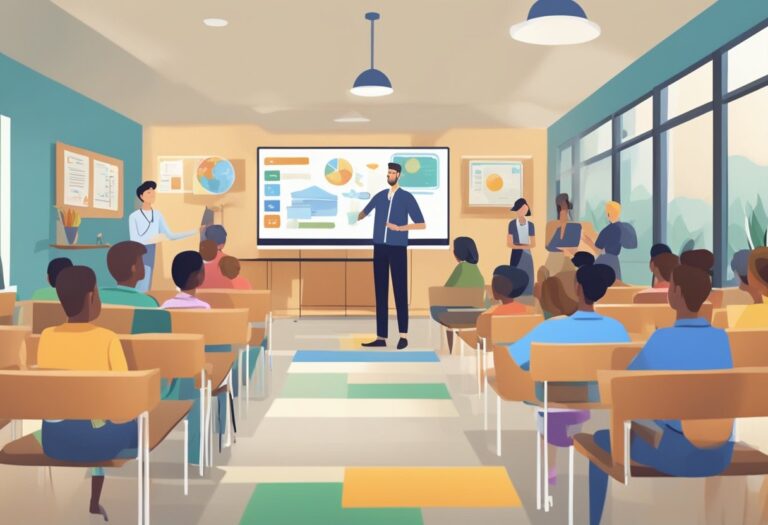Bridging Entertainment and Education: How Teachers Can Curate Animated Content for Maximum Learning Impact

In educational environments where engagement is crucial to success, innovative teachers are discovering the remarkable potential of carefully selected kids animated shows as pedagogical tools. The strategic curation of animated content represents a significant opportunity for educators seeking to meet diverse learning needs while maintaining student interest. By applying thoughtful selection criteria and intentional implementation strategies, teachers can harness the natural appeal of animation to reinforce curriculum objectives and develop essential skills that extend well beyond academic knowledge.
The process of curating animated content for classroom use requires discernment and alignment with specific educational goals. Effective teachers approach this task with clear criteria in mind, evaluating potential selections for age-appropriateness, curriculum relevance, production quality, and underlying messages. This curatorial process often involves previewing content, consulting educational research, and considering the specific needs and backgrounds of students in the classroom. When executed thoughtfully, this selection process results in a powerful collection of animated resources that can be deployed strategically throughout the academic year.
The research supporting the educational value of properly selected animated content is substantial. Cognitive science has demonstrated that information presented through multiple modalities—combining visual, auditory, and narrative elements—is processed more deeply and retained more effectively than information presented through a single channel. Animation inherently combines these modalities, making it particularly well-suited for reinforcing complex concepts and supporting diverse learning styles.
Cultural relevance represents another crucial consideration in the curation process. Thoughtful teachers select animated content that reflects the diverse backgrounds and experiences of their students, recognizing that children engage more deeply with material when they see aspects of their own lives represented. This attention to cultural relevance serves both to validate students’ identities and to broaden all students’ understanding of diverse perspectives and experiences.
The implementation of curated animated content varies according to pedagogical purpose. Sometimes animation serves as an introduction to a new concept, capturing attention and establishing foundational understanding. In other instances, it functions as reinforcement, presenting familiar concepts in a new context that deepens comprehension. Advanced applications might include comparative analysis, where students critically evaluate how different animated sources present similar concepts, developing media literacy skills alongside content knowledge.
Differentiation becomes more accessible when teachers utilize animated content strategically. For students struggling with reading comprehension, animated explanations can provide an alternative pathway to understanding complex material. Advanced learners can analyze the same content at a more sophisticated level, perhaps exploring the creative choices made by the animators or connecting the content to broader themes. This flexibility allows teachers to meet diverse learning needs while maintaining a shared classroom experience.
Assessment opportunities emerge naturally when animated content is integrated thoughtfully into curriculum. Teachers might ask students to create storyboards predicting how animated characters would solve new problems, write alternative endings that demonstrate concept mastery, or analyze the accuracy of scientific principles depicted in animated segments. These creative assessment approaches often reveal deeper understanding than traditional testing methods, while simultaneously engaging students more fully in the evaluation process.
The development of critical viewing skills represents another valuable outcome of curated animation in educational settings. When teachers guide students in analyzing how animated content presents information—considering perspectives, identifying potential biases, and evaluating accuracy—they cultivate media literacy skills that have lifelong relevance. These structured viewing experiences transform passive consumption into active critical engagement, preparing students to navigate an increasingly media-rich world.
Parent partnerships can be strengthened through thoughtful communication about classroom use of animated content. When teachers explain the educational rationale behind selected programming and suggest related activities for home viewing, they extend learning beyond school hours and provide families with tools to support academic development. This transparent approach also addresses potential concerns about screen time by emphasizing the intentional, educational nature of the selected content.
The technical implementation of animated content in classrooms has become increasingly accessible with advances in educational technology. Many platforms now offer curated collections of educational animations, complete with supplementary materials like discussion questions and activity suggestions. These resources significantly reduce the preparation burden on teachers while ensuring access to high-quality content aligned with educational standards.
Beyond supporting academic content knowledge, strategically selected animated programming can promote crucial executive function skills like attention regulation, working memory, and cognitive flexibility. The narrative structures common in quality children’s animation often require viewers to track multiple plot elements, make predictions based on available information, and adjust those predictions as new information emerges—all processes that strengthen executive function development.
In conclusion, the thoughtful curation and implementation of animated content represents a powerful approach to contemporary education. By selecting programming that aligns with curriculum objectives, addresses diverse learning needs, and engages students authentically, teachers create learning experiences that combine the motivational power of entertainment with the structured development of essential knowledge and skills. This bridge between entertainment and education acknowledges children’s natural attraction to animation while channeling that interest toward meaningful learning outcomes that prepare them for future success.
![HITV APP Download [Apk] Latest Version [Unlimited Movies]](https://hitvofficial.com/wp-content/uploads/2024/06/cropped-HiTV-Official-3.png)